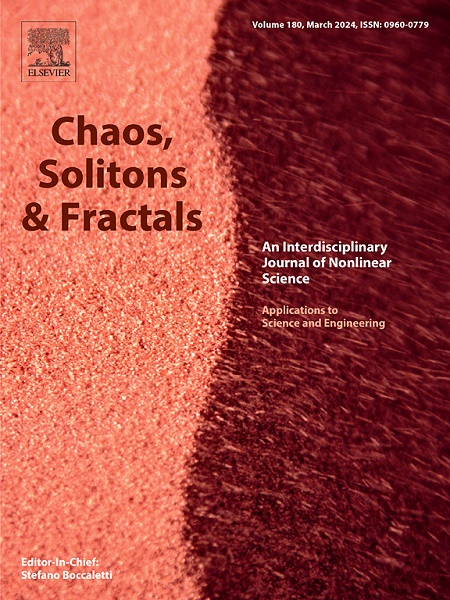Exhaustive classification of stochastic cooperative-level dependent strategies in iterated prisoner’s dilemma
IF 5.6
1区 数学
Q1 MATHEMATICS, INTERDISCIPLINARY APPLICATIONS
引用次数: 0
Abstract
We propose an infinitely iterated prisoner’s dilemma in which the stochastic strategies react to a global cooperative level. The cooperative level is a result of the collective actions of the agents, not only of the opponents. The stochastic strategies are represented by , where () is the probability of taking a cooperative action when the cooperative level is below (equal or above) a threshold , and is an initial cooperative probability. A relevant situation, among others, is that of budding yeast growing on sucrose, where the monosaccharide created by some yeasts are shared by those in the neighborhood. The decision on whether to create (to cooperate) monosaccharide or not (to defect) is dependent on the monosaccharide concentration and thus can be modeled by stochastic cooperative-level dependent strategies. We classify such stochastic strategies exhaustively for different values of . All Nash equilibria are identified and strategies that are stable against invasion by selection pressure are characterized. The results are helpful in understanding the final winning strategies emerged in competing systems in which actions are decided based on the cooperative level.
迭代囚徒困境中随机合作依赖策略的穷举分类
我们提出了一个无限迭代的囚徒困境,其中随机策略对全局合作水平作出反应。合作水平是代理人集体行动的结果,而不仅仅是对手的结果。随机策略用(y,p,q)表示,其中p (q)是当合作水平低于(等于或高于)阈值mc时采取合作行动的概率,y是初始合作概率。其中一个相关的情况是,在蔗糖上生长的芽殖酵母,其中一些酵母产生的单糖被附近的酵母共享。产生(合作)单糖或不产生(背叛)单糖的决策取决于单糖的浓度,因此可以用随机合作依赖策略来建模。我们针对不同的mc值对这些随机策略进行了详尽的分类。我们确定了所有的纳什均衡,并对那些抵抗选择压力入侵的稳定策略进行了表征。研究结果有助于理解基于合作水平决定行动的竞争系统中出现的最终获胜策略。
本文章由计算机程序翻译,如有差异,请以英文原文为准。
求助全文
约1分钟内获得全文
求助全文
来源期刊

Chaos Solitons & Fractals
物理-数学跨学科应用
CiteScore
13.20
自引率
10.30%
发文量
1087
审稿时长
9 months
期刊介绍:
Chaos, Solitons & Fractals strives to establish itself as a premier journal in the interdisciplinary realm of Nonlinear Science, Non-equilibrium, and Complex Phenomena. It welcomes submissions covering a broad spectrum of topics within this field, including dynamics, non-equilibrium processes in physics, chemistry, and geophysics, complex matter and networks, mathematical models, computational biology, applications to quantum and mesoscopic phenomena, fluctuations and random processes, self-organization, and social phenomena.
 求助内容:
求助内容: 应助结果提醒方式:
应助结果提醒方式:


